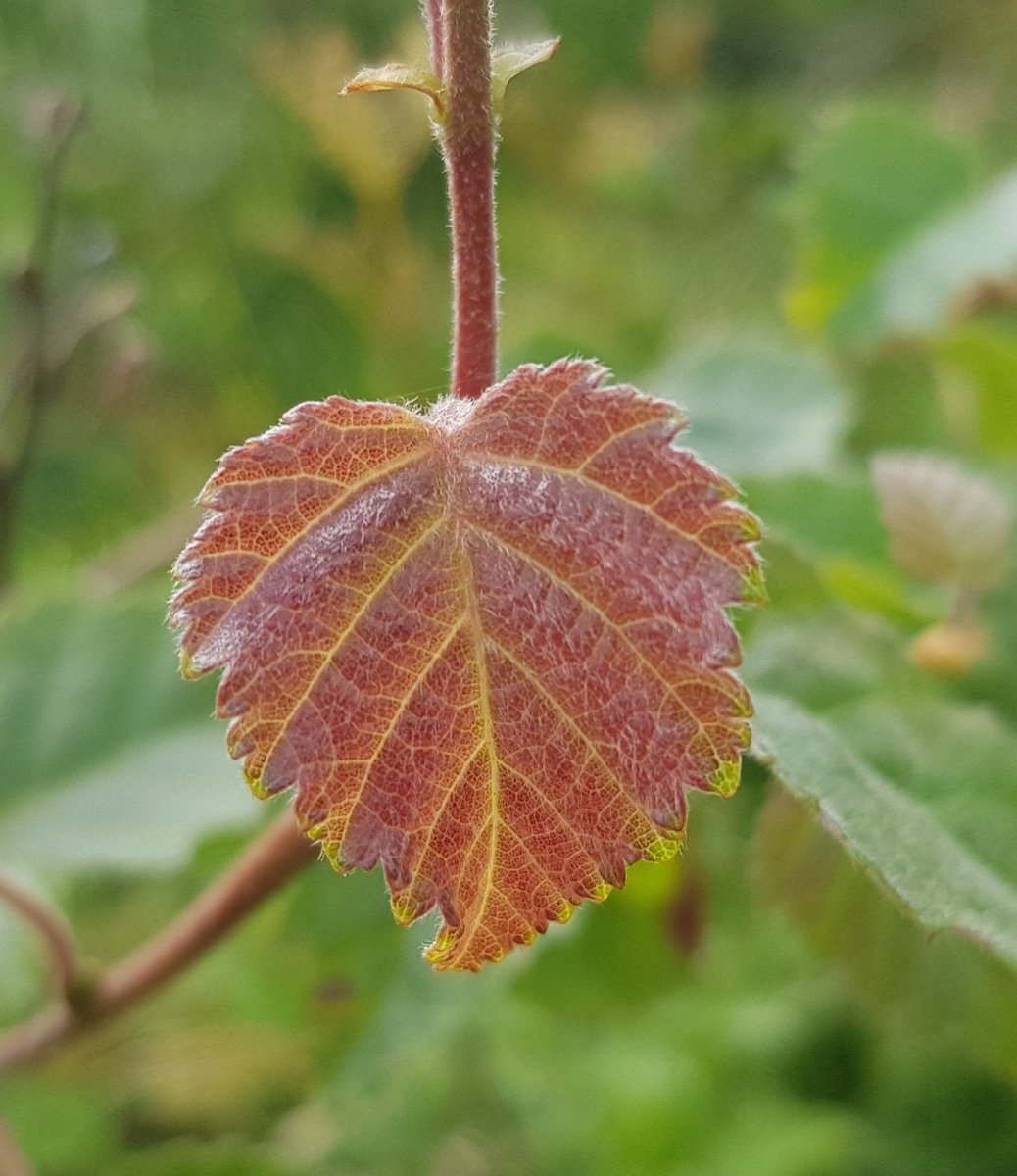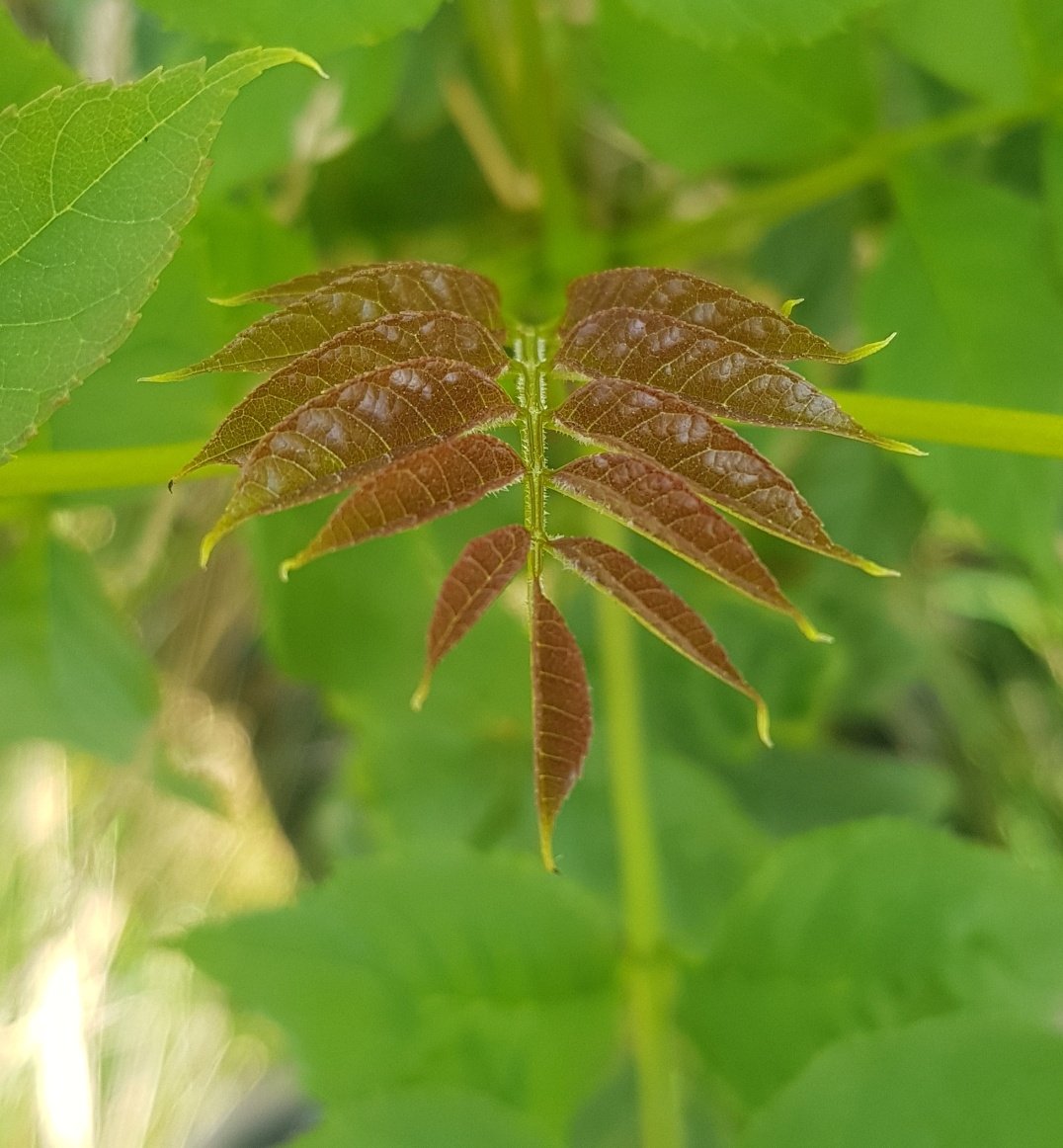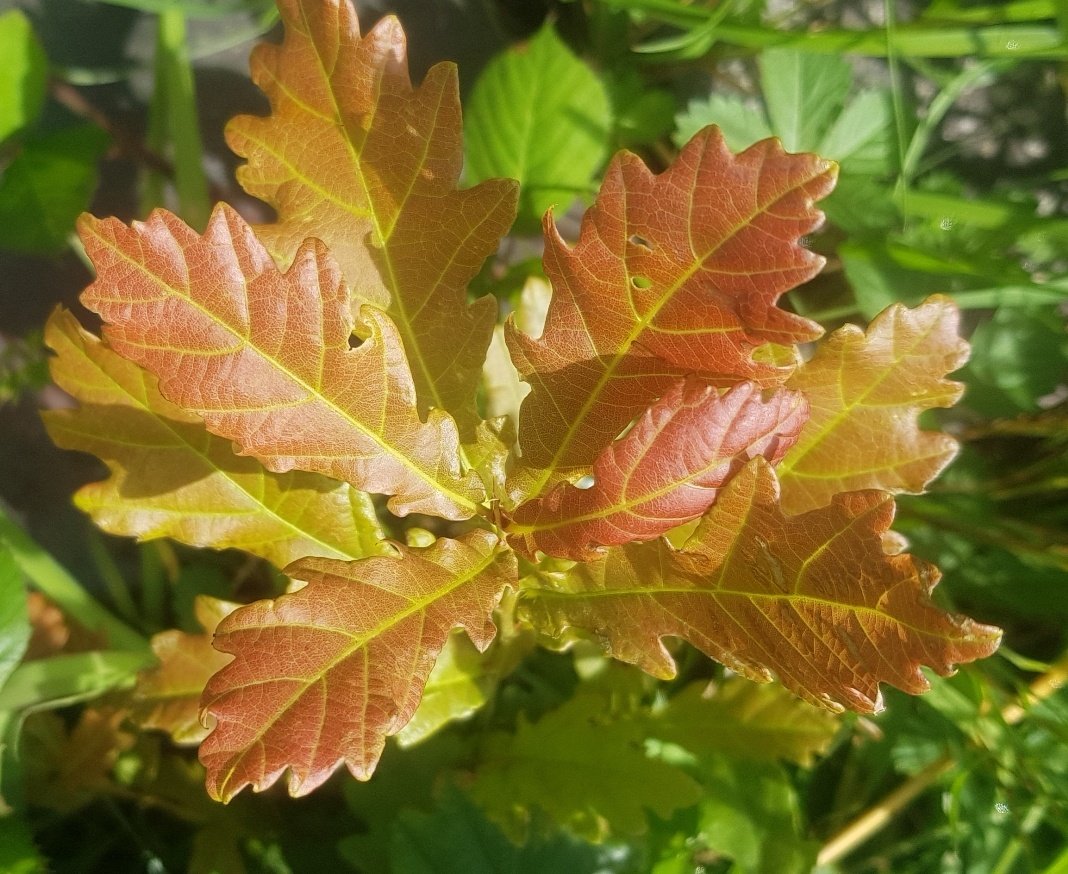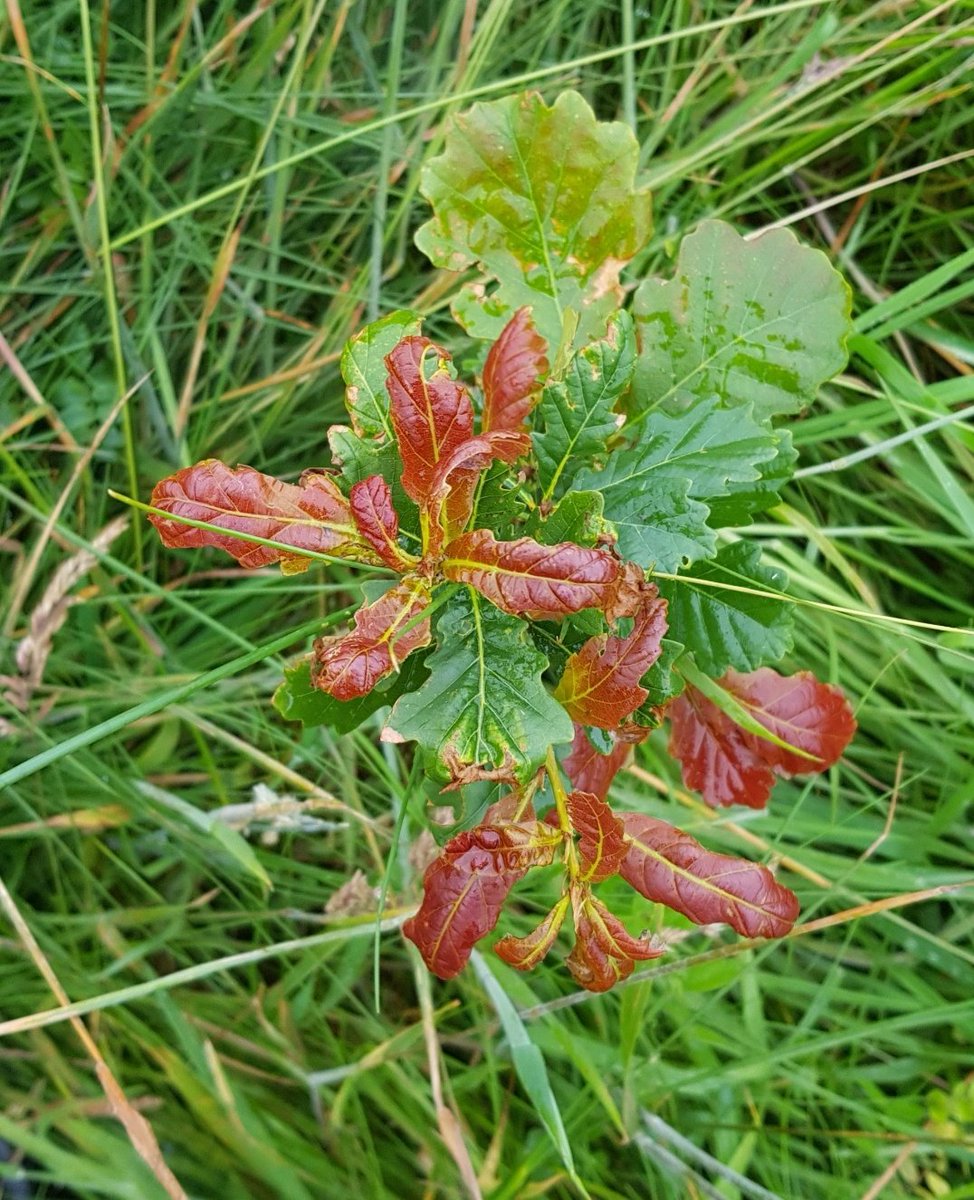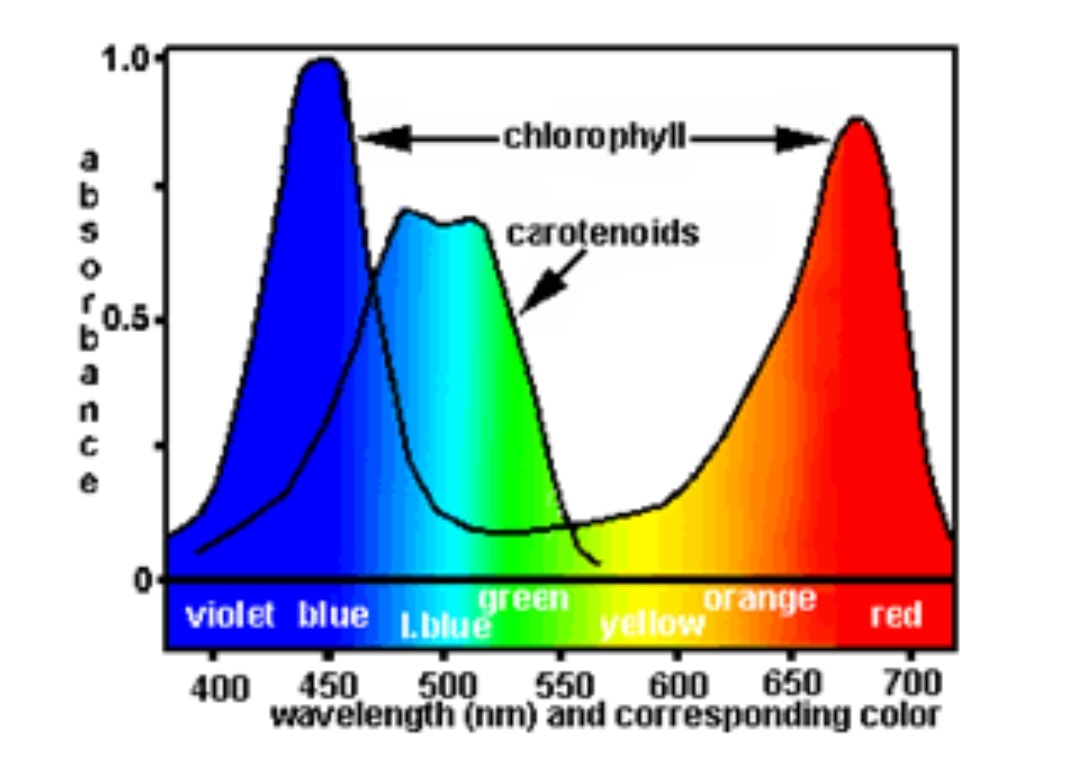Why are some new leaves red?
Thread on anthocyanins
There are two red pigments found in trees, caretonoids (red/orange)and less well known anthocyanins (purple/red)
Thread on anthocyanins
There are two red pigments found in trees, caretonoids (red/orange)and less well known anthocyanins (purple/red)
Caretonoids primary function is to absorb energy from light wave lenghts which chlorophyll can't.
They are heavily associated with autumn leaves.
They are heavily associated with autumn leaves.
Anthocyanins on the other hand were for a long time considered a puzzling waste of plants energy (synthesising the molecule is energy intensive).
Research has now shown it to have multiple important functions, many related to plants stress response.
Research has now shown it to have multiple important functions, many related to plants stress response.
In most trees this molecule is exclusively found in young rapidly expanding leaves or at the later stages of leaf senescence.
I've alway associated with healthy vigorous growth but having read more I see it as a tree under pressure deploying it full arsenal in a bid to survive
I've alway associated with healthy vigorous growth but having read more I see it as a tree under pressure deploying it full arsenal in a bid to survive
One paper dubbed it the "swiss army knife molecule"
Here are some of the main research findings>
Anthocyanins can deter herbivory of vulnerable young leaves.
They have been shown to attract predators of herbivorous insects to the site of attack.
Here are some of the main research findings>
Anthocyanins can deter herbivory of vulnerable young leaves.
They have been shown to attract predators of herbivorous insects to the site of attack.
They have been shown to enhance black/red contrast between leaves and berries to facilitate more efficient seed dispersal by birds.
The can act like a sunscreen-they have a role on preventing photoinhibition (sun damage to photosynthesising apparatus) in young leaves>
The can act like a sunscreen-they have a role on preventing photoinhibition (sun damage to photosynthesising apparatus) in young leaves>
who have not yet accumulated enough chlorophyll.
Anthocyanins can also prevent photodegredation (destruction by sunlight) of important molecules the plant requires for other functions such as repelling pests.
They do this by absorbing and dispersing excess photons.
Anthocyanins can also prevent photodegredation (destruction by sunlight) of important molecules the plant requires for other functions such as repelling pests.
They do this by absorbing and dispersing excess photons.
They say observation is the basis of intelegence.
I'm not sure I would have ever asked this question without having time to wander aimlessly through nature and observe it changing and reacting.
Also...the internet is one helluva resource.
I'm not sure I would have ever asked this question without having time to wander aimlessly through nature and observe it changing and reacting.
Also...the internet is one helluva resource.

 Read on Twitter
Read on Twitter